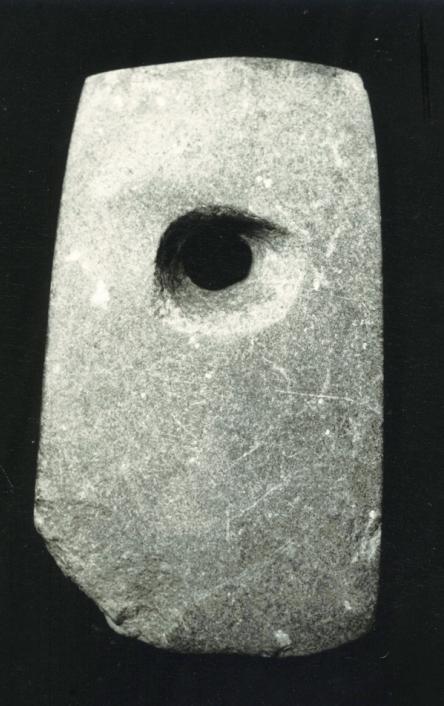Segmented Stone Adze: Chiseling the era of maritime migration
Updated:2025-05-19 | Lin Kongbo, Stephanie
Name: Segmented Stone Adze
Excavation Site: Donghuaxiu site, Pingtan
Function: Ground stone tool
Era: Late Neolithic to Bronze Age
Age: Approximately 4,000 years
Archaeological Findings:
The segmented stone adze is a type of ground stone tool, typically rectangular with a single-edged blade. Its top is shaved to form a handle segment, making it easier to bind with wooden handles—hence its name "segmented." In ancient times, it was primarily used for woodworking, including crafting fish spears, fishing rods, and even dugout canoes.
Stone adzes are among the most frequently unearthed artifacts at Neolithic sites. During the 1985 Keqiutou excavation, stone adzes accounted for two-thirds of the total stone tools discovered.
Hou Ronggui, deputy director of the Pingtan International Austronesian Research Institute pointed out that although they are often mistaken for fishing tools, stone adzes were essential woodworking tools. Their role in building dugout canoes marked the beginning of oceanic exploration, expanding human activities and initiating Austronesian migration.
Hou Ronggui stated that segmented stone adzes serve as crucial physical evidence of early human oceanic migration. Thousands of years ago, the seafaring ancestors who migrated along the coasts became the focus of international archaeological studies on the origins and expansion of the Austronesian people over the past half-century."The Keqiutou Culture and Taiwan's Dabenkeng Culture belong to the same cultural sphere. They must share a common origin," Hou explained. This perspective effectively traces the Austronesian "homeland" back to the mainland.
Stone adzes have been found along the Austronesian migration route, from Taiwan and the Philippines to Northern Borneo and Polynesian islands in the Pacific. Those unearthed at Keqiutou are among the earliest discovered in Southeast China. The site is now recognized by both international and Chinese archaeologists as the starting point for Austronesian migration.
"Through the excavation of various Neolithic sites, it is highly likely that Pingtan was the first stepping stone for the Austronesian maritime migration to French Polynesia." In 2016, Professor Terry Hunt, an anthropologist and archaeologist from the University of Hawaii, accompanied the Fujian Museum's archaeological team to the Keqiutou site in Pingtan for field research. He inscribed this statement for the Pingtan prehistoric site during his visit.
Additional context:
The Austronesian people are those who speak Austronesian languages, primarily an oceanic population distributed across islands. The Austronesian language family is one of the most complex in the world, encompassing over 1,200 languages. Globally, there are around 400 million Austronesian language speakers, spanning from Taiwan and Hawaii in the north to New Zealand in the south, from Madagascar in the Indian Ocean to Easter Island in the eastern Pacific.

